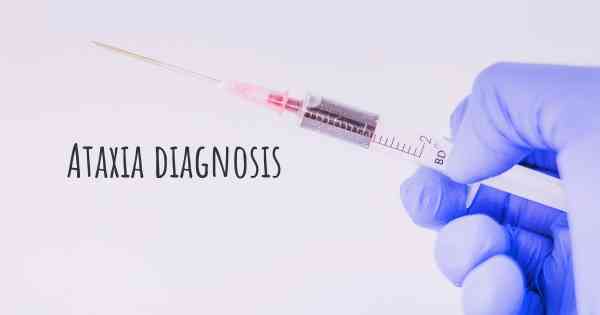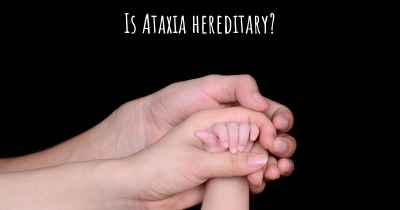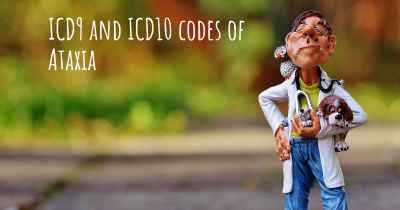How is Ataxia diagnosed?
See how Ataxia is diagnosed. Which specialists are essential to meet, what tests are needed and other useful information for the diagnosis of Ataxia

Ataxia is a neurological condition characterized by a lack of muscle coordination, leading to difficulties with voluntary movements such as walking, speaking, and swallowing. It can be caused by various factors, including genetic mutations, trauma, infections, toxins, or certain diseases. Diagnosing ataxia involves a comprehensive evaluation of the patient's medical history, physical examination, and a series of diagnostic tests.
Medical History
The first step in diagnosing ataxia is obtaining a detailed medical history from the patient. The healthcare provider will ask questions about the onset and progression of symptoms, any family history of ataxia or related conditions, exposure to toxins or medications, and any other relevant information. This information helps in understanding the potential causes and narrowing down the diagnostic possibilities.
Physical Examination
A thorough physical examination is crucial in assessing the presence and severity of ataxia. The healthcare provider will observe the patient's gait, coordination, balance, and muscle tone. They may also evaluate the patient's eye movements, reflexes, and sensory perception. These examinations help in identifying specific patterns of ataxia and ruling out other possible causes of the symptoms.
Diagnostic Tests
Several diagnostic tests are available to aid in the diagnosis of ataxia. The choice of tests depends on the suspected underlying cause and the information gathered from the medical history and physical examination. Some common diagnostic tests include:
1. Blood Tests:
Blood tests can help identify certain genetic markers, metabolic abnormalities, or infections that may contribute to ataxia. These tests may include genetic testing, complete blood count (CBC), comprehensive metabolic panel (CMP), vitamin E and B12 levels, and screening for specific antibodies.
2. Imaging Studies:
Brain imaging studies such as magnetic resonance imaging (MRI) or computed tomography (CT) scans can provide detailed images of the brain structure. These scans help identify any structural abnormalities, such as tumors, lesions, or cerebellar atrophy, which can cause ataxia.
3. Electromyography (EMG) and Nerve Conduction Studies (NCS):
EMG and NCS are tests that evaluate the electrical activity and conduction of nerves and muscles. These tests can help determine if the ataxia is due to peripheral neuropathy or muscle disorders.
4. Lumbar Puncture:
A lumbar puncture, also known as a spinal tap, involves collecting a sample of cerebrospinal fluid (CSF) from the lower back. Analysis of the CSF can detect infections, inflammation, or other abnormalities that may be causing ataxia.
5. Genetic Testing:
Genetic testing plays a crucial role in diagnosing hereditary ataxias. There are numerous genes associated with different types of ataxia, and identifying specific genetic mutations can help confirm the diagnosis and guide treatment decisions.
6. Biopsy:
In some cases, a biopsy of affected tissues, such as muscle or nerve, may be necessary to determine the cause of ataxia. Biopsies are typically performed when other diagnostic tests have been inconclusive.
Consultation with Specialists
Due to the complexity of ataxia, it is common for healthcare providers to refer patients to specialists, such as neurologists or geneticists, for further evaluation and diagnosis. These specialists have expertise in identifying specific types of ataxia and can provide valuable insights into the underlying causes and potential treatment options.
It is important to note that diagnosing ataxia can be challenging due to its diverse causes and overlapping symptoms with other neurological disorders. Therefore, a comprehensive evaluation, including medical history, physical examination, and appropriate diagnostic tests, is essential for an accurate diagnosis.
Posted Sep 12, 2017 by KJ 700
Posted Sep 13, 2017 by Brian 1500
Posted Dec 2, 2017 by Devin 1500
Posted Jun 3, 2018 by rbaculi 400
Posted Mar 6, 2017 by Luiz 500
Posted Mar 28, 2017 by PAULA 600








